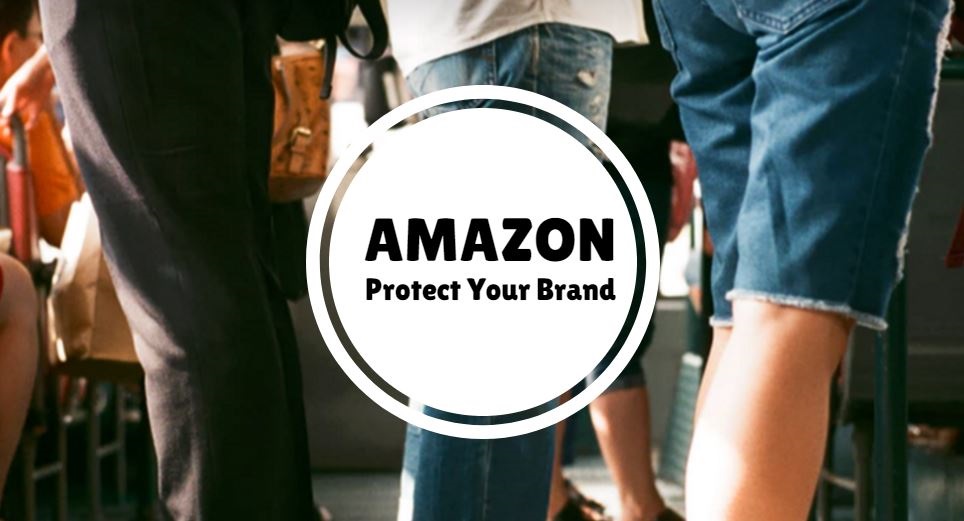Protecting Your Brand on Amazon: 3 Steps to Use


This is a guest post by Jeffrey H. Schick, Partner at Francissen Rafelson Schick LLP.

You are likely reading this article because you have invested a significant amount of time and monetary resources to build a great brand.
You did everything to make the brand successful: you came up with a great product, you have eye-catching packaging, stunning lifestyle images, robust pay-per-click marketing campaigns, and investments in engaging listing copy and content.
You already know that all this great investment in content and marketing is essential to differentiate your product from other competitive products on the market, but in the world of online marketplaces, you’re subject to a new kind of competitive pressure: intrabrand competition.
Intrabrand competition is a brand threat that exists uniquely in the world of online marketplaces.
When you go to the “virtual shelf”, also known as a product detail page, you’ll see multiple competing offers for the same item with a range of prices.
Let’s say for this example, you want to buy a razor. Some of the razors may be priced as low as $4.98, some may be $8.43, another offer may even be $6.51.
Not only do consumers have to choose between brand names like Schick and Gillette, now they must also decide which “seller offer” to choose.
When you add in the fact that some of those third-party sellers may be unauthorized sellers or selling counterfeit products, the threat of brand erosion becomes very real.
If you are serious about growing your brand’s presence on Amazon, you want to ensure that your consumers are receiving the same quality goods on Amazon that they receive from brick and mortars.
The most important reason for this is to protect your brand reputation. Simply put, inferior goods sold by unauthorized sellers who don’t follow your quality control procedures will cause long-term brand erosion.
The second important reason you want to ensure anyone selling your product
on Amazon is following quality controls is to protect your Amazon product reviews.
On Amazon, your product reviews will make or break your brand and product reputation. Product reviews are also one of the many factors Amazon uses to determine which products will be on “Page 1” for a given product search.
If you think of a traditional brick and mortar, there’s only a given amount of shelf space available in-store. As new products enter the market, stores will gradually retire older products and replace them with new products on their shelf.
But because Amazon is a function of the internet, hundreds of new sellers can join the site without having to kick off any older sellers. This leaves the impression that there is endless shelf space, which is theoretically true.
The problem is consumer browse behavior hasn’t changed much. So while there’s a 1,000 additional pages of products to choose from, when you search for a keyword like “razor” the majority of shoppers still won’t search for products beyond the first page.
“In fact, almost 100% of all sales are garnered within the first 3 pages. This would be like a brick and mortar adding 50 floors of products to their current structure, without building an elevator for consumers to reach them. Nobody is going to climb up 50 flights of stairs to look at your product, when there’s a comparable product on the first floor,” Courtney Manual, Marketing Manager at Guthy-Renker said at AdDiego 2018.
Thus, brands investing in high-quality content and advertising need to do everything possible to ensure that their product ends up on Page 1.
If you have a product that requires stringent quality controls to ensure it stays in top condition for end users, ensuring that customers receive products handled in accordance with your QC requirements is crucial for your product to maintain positive feedback.
Think about products where quality control is important, and you’ll see quality controls apply to many types of products including pet supplies, health, and nutritional supplements, cosmetics, baby products, children’s’ toys, and many others.
1. The first step to creating an effective brand protection strategy is to think about your goal.
For many of our clients in the animal health and pet care space, they want to protect pets from the harms of counterfeit products and protect veterinarians from unauthorized sellers who violate MAP. Thus, our goal is to prevent counterfeit products from being sold on Amazon and enforce MAP policies, and we work backward to achieve these goals.
This means putting in place the legal foundation necessary to protect our client’s brand online. We start by ensuring the client has an effective trademark portfolio so that we have enforceable intellectual property rights.
2. Next, we establish legally-compliant material differences to ensure that the client can remove unauthorized and counterfeit sellers.
Material differences can take many forms, but in the animal health space quality control and satisfaction guarantee policies are very effective for achieving our goals.
3. Then we help our clients draft and institute effective MAP Policies and enforcement procedures.
Once have the legal foundation in place to protect pets from counterfeit sellers and MAP violators, we begin monitoring our client’s listings. We utilize market-leading software that scans marketplaces constantly and uses image, title, and UPC recognition to crawl the web constantly to identify sites where our clients’ products are being sold.
When our law firm identifies unauthorized sellers, MAP violations, or potentially counterfeit items, we immediately begin our enforcement program.
The key to effective brand protection is to pair your monitoring efforts with an effective enforcement program. Many small sellers and brands try to “DIY” their brand protection efforts, which can have legal ramifications if they do not consult with attorneys first.
Specifically, we work with many sellers and brands who try to send C&D letters through Buyer-Seller Messaging, often with their own company name on the C&D letter.
However, for unauthorized sellers and MAP violators, this can be very ineffective if they are not intimidated by the letter, especially if the C&D being sent was not written by an attorney.
I’ve seen C&D letters quoting copyright and patent laws from the European Union when they are being sent to sellers based in the United States. Unfortunately, sophisticated sellers are not phased by these letters, especially when the seller knows the law better than the brand sending the C&D.
Another additional concern to the DIY approach is that sellers sending C&D letters which are not based on a solid legal foundation could potentially expose their company to legal action, including a variety of tort claims. Even more dangerous are the “Brand Protection” companies who peddle the notion that you can remove unauthorized sellers by telling Amazon that they are selling counterfeit products, or that their sales constitute trademark infringement.
As a law firm, we only submit counterfeit or infringement reports to Amazon if we have verified through a test-buy and legal analysis that the items being sold are counterfeit or infringing. This is because submitting false infringement or counterfeit reports to Amazon immediately opens your company to tort law claims, including tortious interference with contract, business defamation, and a whole host of other state law claims.
So, what makes our integrated enforcement approach so effective? We use a strategic approach to enforcement that involves our monitoring technology, investigations, and test-buys to uncover unauthorized seller identities, and an integrated enforcement system to remove unauthorized sellers.
From the moment an unauthorized seller joins a listing, we begin investigating whether the seller is selling counterfeit items. These sellers are the most dangerous to your brand value, and therefore we will work to quickly remove them as the highest priority.
If we identify a counterfeit seller, we work with the marketplace to have them removed quickly. For MAP violators or unauthorized sellers selling genuine products, we investigate where their product came from, and take a multi-pronged approach to cut off their supply and remove them from the listings. This can include sending Cease and Desist letters, all the way to litigation against serious infringers.
Our goal is to help brands of all sizes protect their online reputation. Through smart brand protection strategies, we help brands ranging from private label sellers with a few products to industry-leading animal health brands with dozens of products protect and strengthen their online reputation.
Through our efforts, our goal is to help protect the brands that are important to our everyday lives, and in the process, we help children, pets, and people live healthier lives by preventing harmful counterfeit products from entering the supply chain.
